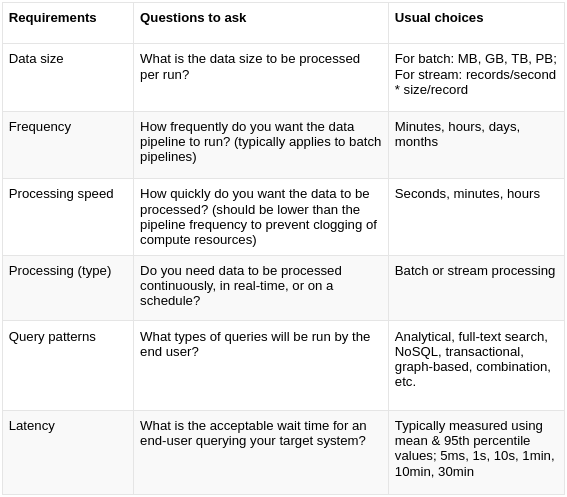Data engineering is rapidly evolving. And with so many data engineering tools available, it can be challenging to determine which is best suited for your organization's specific needs. Especially if you are building a data pipeline from the ground up, the number of available tools to choose from can be overwhelming.
There are various types too. Such as data ingestion, transformation, storage, processing, ETL, security, cataloging, analytics tools, and more.
While data engineers need not be experts in every kind of available tool, they must know how to choose the right technology for the specific task and anticipate the needs of the project and its stakeholders.
To serve as a helping guide, this article will discuss how to choose the right data engineering tools for a robust pipeline. We will go over:
- Factors to consider when selecting tools
- Steps to evaluate and select data engineering tools
Let’s begin!
Factors to consider while choosing the right data engineering tools
1. Determine business requirements
The first step in choosing the right tools is to determine and gather your business needs. It is essential to evaluate tools from business utility lenses.
Identify factors such as the type of data you want to collect, the frequency of data ingestion, data sources, data destinations, etc. This will help you narrow down the list of available tools that can meet your business requirements and filter out ones that don’t fit your scenarios. For further fileting, ask:
- How can the tool help the business achieve more value and a competitive edge?
- Is there a better alternate (tools) to achieve the business goals or needs?
- Have you discussed the pros and cons of the tools with CEOs, CTOs, or other key decision-makers and got a green light from them?
2. Consider architecture design
After understanding the business needs, data engineers should design the data engineering (or pipeline) architecture. It serves as a strategic guide to the what, why, and how of implementing the architecture. And thus, it helps choose the right stack for the architecture.
3. Consider scalability and performance
Ask how scalable and performant is the tool. It indicates if the tool will be able to handle a growing amount of data without any issues. Scalability is a critical factor to consider as the volume of data is continuously increasing, and organizations must keep up with the demand for processing data efficiently.
4. Evaluate integration with existing systems
Ask how interoperable the tools are. Are the interoperability and flexibility good or bad? It is essential to ensure that the tools you pick can integrate with the organization's existing systems and stack, including databases, data warehouses, data lakes, etc. Integration is necessary to maintain data consistency and avoid data silos.
On any given day, tools that can connect, exchange information, and interact with others easily, reliably, and securely should be preferred.
5. Look for flexibility and customization
How much flexibility and customization does the tool offer? Business needs evolve constantly. Thus, tools should be flexible and customizable to meet the organization's unique needs. Customization can include building custom workflows or adding custom scripts to existing workflows to handle specific data processing tasks.
6. Support and Maintenance
Data engineering tools, like all tools, require ongoing maintenance and support. It's essential to choose a tool with good support and documentation to ensure that issues are resolved quickly and efficiently. Thus, a well-supported or documented tool can speed up development.
So, ask questions such as – Is the tool open source or popular? Is the code easy to read? How is the UI? Does it have a vast community (Slack/Discourse/Discord)?
7. Cost
The cost of the data engineering tool is another critical factor to consider. It can include the initial purchase price, ongoing maintenance costs, and any other additional costs associated with the tool, such as licensing fees, cloud storage costs, or third-party integration costs.
Or does the tool have the pay-as-you-go model? What is the Total Cost of Ownership (TCO) & Total Opportunity Cost of Ownership (TOCO)? Evaluate the costs and determine if it's worth the investment.
Steps to evaluate and choose data engineering tools
To sum up, here are the steps you can follow to select data engineering tools:
- Understand and gather business requirements.
- Identify the components that will make up your pipeline.
- Research and shortlist the tools.
Evaluate the tools against the factors we discussed above to shortlist a few. Another quick way to assess is by performing a proof-of-concept.
- Obtain feedback from users.
And then, choose the tools that will help you move quickly, reliably, safely, and securely!
Conclusion
I hope this article gave you a better idea of how to pick the right tools for your data engineering pipelines. However, the above list may not be definite. You must also consider factors such as the team’s size, skills, and capabilities, if the tool is future-oriented, and more, depending on the business or project you are working with.
If you have more questions or other criteria/filters that have helped you choose the perfect tool, please feel free to share them in the comments!




Top comments (0)